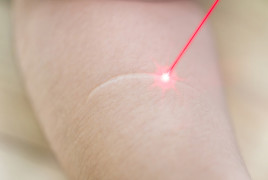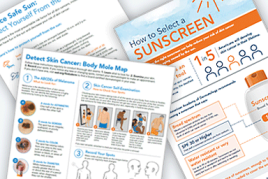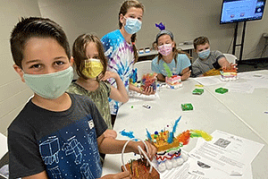Prurigo nodularis: 9 dermatologists’ tips for relieving the itch
How to ease the itch of prurigo nodularis
If you have this skin condition, you know how itchy it can be. Prurigo nodularis is considered one of the itchiest skin conditions, if not the itchiest. Many people say that their skin itches severely. Some people develop itchy prurigo nodules (bumps) that cover large areas.
Here are tips that dermatologists give their patients to relieve the itch:
Protect your skin from scratching
Scratching can temporarily relieve the itch. However, if you have prurigo nodularis, scratching also makes your skin itchier. To protect your skin, dermatologists recommend that you:- Cover skin with prurigo nodularis. If an area is intensely itchy or inflamed, dermatologists recommend that you bandage it with breathable dressings or bandages.
For other itchy skin, covering it with clothing like pants, long sleeves, and socks adds a layer of protection between your nails and the bumps. - Keep your nails short. Nails do less damage when they’re short.
- Consider wearing lightweight gloves or mittens. If you can prevent overheating, try wearing gloves or mittens until you can stop scratching. You want to make sure that you don’t overheat, as that can cause your skin to itch.
Wearing lightweight gloves or mittens while you sleep can prevent you from damaging itchy skin while you’re asleep.
If you continue to scratch through your clothes or bandages, tell your dermatologist
A medicated tape may be an option for you. The medication reduces the itch, and the tape adds a protective layer between your nails and your skin.

- Cover skin with prurigo nodularis. If an area is intensely itchy or inflamed, dermatologists recommend that you bandage it with breathable dressings or bandages.
Use gentle, fragrance-free skin care products
Any skin care product — soap, cleanser, or moisturizer — that will touch your skin with prurigo nodularis should be:- Made for sensitive skin
- Fragrance free
Moisturize
Dry skin itches. To prevent this, dermatologists recommend applying a mild, fragrance-free moisturizer throughout the day when the air is dry.
Moisturizers that dermatologists recommend using include:- Petroleum jelly
- Fragrance-free, ceramide-rich cream or ointment
- Fragrance-free cream that contains oatmeal or hyaluronic acid
Be gentle with your skin when bathing and showering
To avoid irritating your skin, which can make it itchy, dermatologists tell their patients to:- Use warm water, as hot water can dry your skin.
- Gently wash with a fragrance-free cleanser, applying it with your fingertips and gently splashing it off. Skip the washcloths and buff puffs.
- Gently pat your skin dry with a clean, soft towel.
- Apply fragrance-free moisturizer, such as one listed above, after toweling off.
Avoid triggers
Certain situations and products can make your skin itch. Anything that does is known as a personal trigger. Avoiding your personal triggers can reduce flare-ups. Here’s how to avoid your triggers:- Know the common triggers for itch, which are:
- Dryness
- Extreme humidity
- Fragrance (laundry detergent, skin care products, perfume)
- Heat
- Personal care products
- Stress
- Sweating
- Wearing clothing made of wool, polyester, or any rough-feeling fabric
- Keep a journal to find your triggers. Note when your skin started to itch. Jot down what you were doing then and for a few days beforehand. For example, did you sweat, feel overheated, or notice that your skin felt dry? Also, note what you were eating.
- Try to avoid what triggers your itchy skin. For example, if heat is a trigger, try to keep your skin cool. You can do this by wearing lightweight, breathable fabrics like cotton or staying in air conditioning when heat and humidity soar.
- If you have trouble avoiding a trigger, tell your dermatologist. Your dermatologist can offer solutions that help.
- Know the common triggers for itch, which are:
Be prepared to relieve an itch
Instead of scratching itchy skin, here’s what you can do:- Sudden itch. Apply a non-prescription anti-itch cream or gel that contains pramoxine, menthol, or camphor. These ingredients can give you immediate, but temporary, relief. A cool compress can do the same.
To make a cool compress, place a clean washcloth under cool water, wring out the extra water, and place the cool, damp washcloth on your skin
A cool compress can temporarily ease the itch. Keep the washcloth on your skin for 10 to 15 minutes.

- Skin becomes itchy at bedtime. Prurigo nodularis often itches when you’re relaxed or in bed. Taking a sedating (can cause drowsiness) antihistamine can relieve bedtime itch. Take this medication only as directed.
- Any time skin itches. Distract yourself. Try to keep your hands and mind busy. Doing so can take your mind off the itch.
Sleep in a cool place
When you have prurigo nodularis, skin often itches when you relax. Keeping your sleeping space cool can reduce the itch. When the air feels dry, running a humidifier can also help.Use stress-management techniques
Stress can worsen itching. Practicing stress-management techniques like the following can help:- Meditation
- Yoga
- Deep breathing
Also called diaphragmatic breathing, you do this by taking deep breaths, expanding your belly each time you inhale and contracting it when you exhale.
Wear, lightweight, breathable fabrics like cotton
Some clothing can irritate your skin, making you itch. To avoid this:- Wear light-weight clothing made of breathable fabric like cotton.
- Avoid wearing wool, polyester, and other rough-feeling fabrics.
- Dress in layers so that you can remove a layer if you feel too warm.
- Wash your clothes using a fragrance-free detergent, use the extra rinse cycle, and skip the dryer sheets.
Tips for getting the best results from treatment for prurigo nodularis
Dermatologists also share the following tips to help patients get the most from their treatment plan:
Understand that treatment takes time, and you may need to try different treatments before you find the combination that works for you. Many patients become frustrated and give up too quickly because they don’t see results. Continue to follow your treatment plan. Tell your dermatologist if you have problems following the plan.
Look for signs of a skin infection. While the goal of treatment is to heal the skin, this takes time. It can also take time to stop scratching. You can develop a skin infection from scratching.
If skin with prurigo nodularis develops any of the following signs of infection, call your dermatologist or primary care doctor right away:- Swelling
- Discoloration
- A warm (or hot) feeling
- Pus leaking from open skin
- Pain
Learn the possible side effects of the medications in your treatment plan. A dermatologist tailors each treatment plan to a patient’s unique needs, which helps to reduce the risk of developing side effects. Still, it’s helpful to know what you should watch for. Your dermatologist or pharmacist can tell you.
Keep your medical appointments. Patients who have prurigo nodularis often see a dermatologist, primary care doctor, and other health care providers. To get the best results from treatment, keep all medical appointments. Doing so will help:
- Make sure you know what to do.
- Know whether your treatment plan is working or needs to be changed.
- Find an infection, which can be serious, early.
- Spot a possible side effect early.
These above tips can help you cope while you’re treating prurigo nodularis – and help the disease from flaring after it clears. If you need a dermatologist, go to Find A Dermatologist.
Image
Getty Images
References
Elmariah S, Kim B, et al. “Practical approaches for diagnosis and management of prurigo nodularis: United States expert panel consensus.” J Am Acad Dermatol. 2021;84(3):747-60.
Kim B, Rothenberg ME, et al. “Neuroimmune interplay during type 2 inflammation: Symptoms, mechanisms, and therapeutic targets in atopic diseases.” J Allergy Clin Immunol. 2024 Apr;153(4):879-93.
Mullins TB, Sharma P, et al. “Prurigo nodularis.” In: StatPearls [Internet] Treasure Island (FL): StatPearls Publishing; 2021 Jan.
Silverberg JI. “Nummular eczema, lichen simplex chronicus, and prurigo nodularis.” In: Kang S, et al. Fitzpatrick’s Dermatology. (9th edition) McGraw Hill Education, United States of America, 2019:388-92.
Written by:
Paula Ludmann, MS
Reviewed by:
Brendan Camp, MD, FAAD
Raj Chovatiya, MD, PhD, FAAD
Brian Kim, MD, FAAD
Ata Moshiri, MD, FAAD
Carla Torres-Zegarra, MD, FAAD
Last updated: 4/1/25
 Atopic dermatitis: More FDA-approved treatments
Atopic dermatitis: More FDA-approved treatments
 Biosimilars: 14 FAQs
Biosimilars: 14 FAQs
 How to trim your nails
How to trim your nails
 Relieve uncontrollably itchy skin
Relieve uncontrollably itchy skin
 Fade dark spots
Fade dark spots
 Untreatable razor bumps or acne?
Untreatable razor bumps or acne?
 Tattoo removal
Tattoo removal
 Scar treatment
Scar treatment
 Free materials to help raise skin cancer awareness
Free materials to help raise skin cancer awareness
 Dermatologist-approved lesson plans, activities you can use
Dermatologist-approved lesson plans, activities you can use
 Find a Dermatologist
Find a Dermatologist
 What is a dermatologist?
What is a dermatologist?

